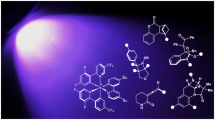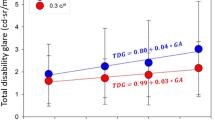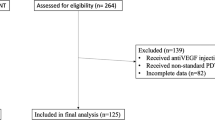Abstract
THE observations by Lythgoe1 on the ‘rotating pendulum’ are almost entirely in accord with the hypothesis that the ‘latent period’ of vision varies in the same sense as the concentration of photochemical substance in the retina of the eye, and is controlled mainly, if not entirely, by this concentration. The concentration of photochemical substance is decreased (a) by a general increase in illumination of the field of view ; (b) by the contemporaneous presence of one or more glare sources in the field of view; (c) by the previous presence of glare sources in the field of view. In case (c), of course, the concentration of photochemical substance is steadily returning to its equilibrium value in the absence of glare sources.
This is a preview of subscription content, access via your institution
Access options
Subscribe to this journal
Receive 51 print issues and online access
$199.00 per year
only $3.90 per issue
Buy this article
- Purchase on SpringerLink
- Instant access to full article PDF
Prices may be subject to local taxes which are calculated during checkout
Similar content being viewed by others
References
Lythgoe, R. J., NATURE, 141, 474 (1938).
Author information
Authors and Affiliations
Rights and permissions
About this article
Cite this article
CRAWFORD, B. Some Observations on the Rotating Pendulum. Nature 141, 792–793 (1938). https://doi.org/10.1038/141792c0
Published:
Issue date:
DOI: https://doi.org/10.1038/141792c0



